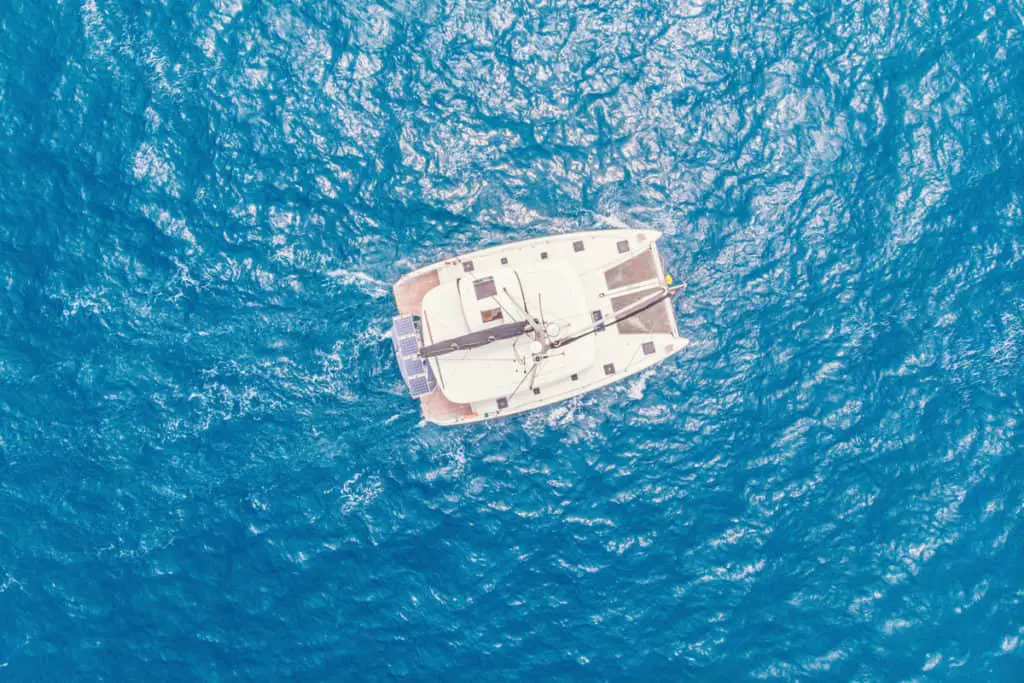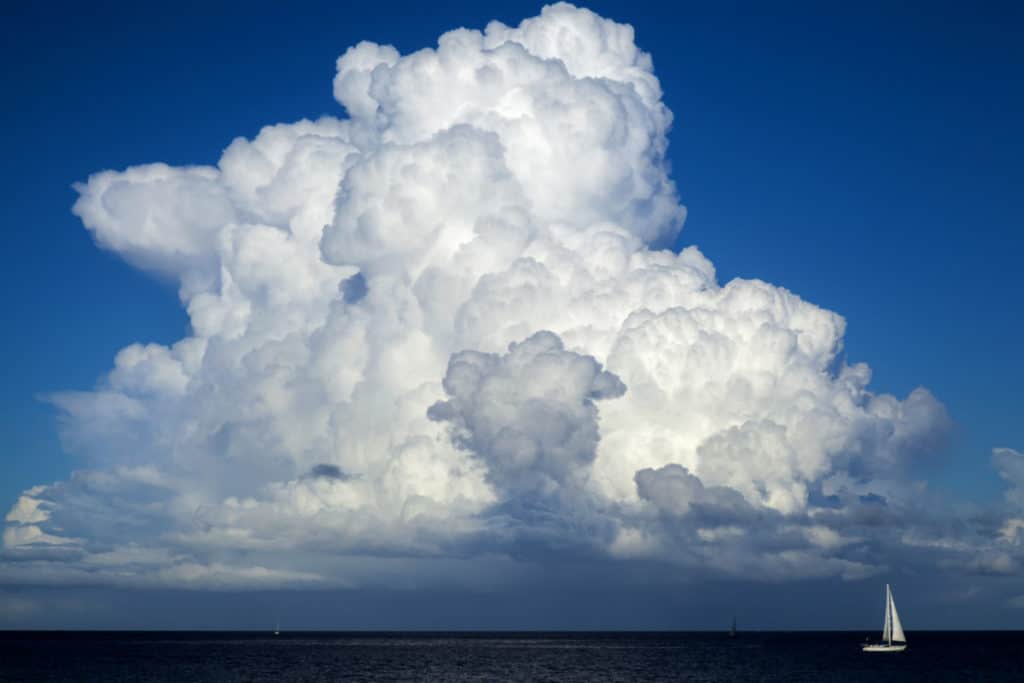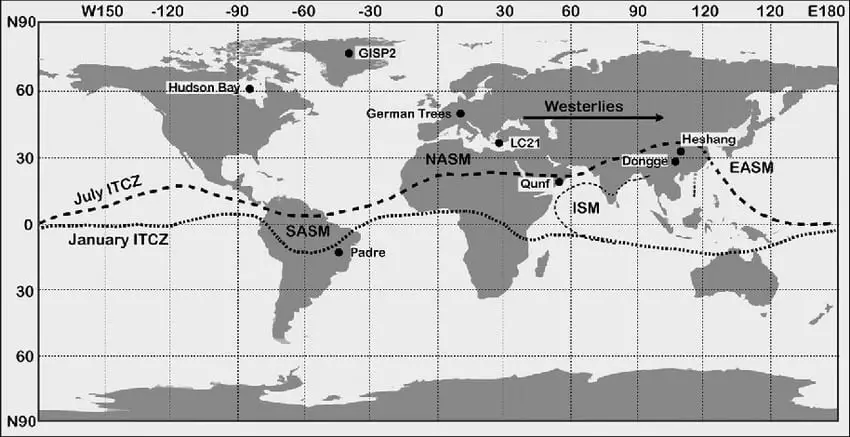As an Amazon Associate, we earn from qualifying purchases. We may also earn commissions if you purchase products from other retailers after clicking on a link from our site.
While most people are familiar with oceans and ocean currents, only a few well-versed with the maritime world know about doldrums. Doldrums are simply a phenomenon found around the equator region, known as the Intertropical Convergence Zone (ITCZ), impacting how sailors are able to utilize the wind. But how exactly do they affect sailing, and why do sailors avoid these areas?
Sailors avoid doldrums since the air in the ITCZ circulates upwards, leaving very little surface wind in the doldrums zones. Sailboats can easily get becalmed in these areas, leaving the sailors to either switch to engine power or risk windless waters for several weeks.
The rest of this article will explore what doldrums are and how they form. Additionally, it will cover the effects that doldrums have on sailing and what it means to be stuck in the doldrums.
What Are Doldrums?

At the doldrums, the northern hemisphere trade winds blow towards the southwest, where they converge with northwest-bound trade winds from the southern hemisphere. At this convergence zone, the air is forced up the atmosphere leaving little or no wind to aid sailing in these regions.
Doldrums is the layman’s term that refers to the ITCZ, which stands for the Inter-Tropical Convergence Zone. It is a belt that runs around the Earth, and it extends approximately 5° north and 5° south of the Equator.
Most commonly confused for doldrums zones are the horse latitudes, which are the areas that precede the doldrums zones. Scientists believe horse latitudes got their name from Spanish voyages on their sailing trips. While transporting their horses to their colonies in the Americas and West Indies, they occasionally got becalmed in this area.
While stranded in these areas, these Spanish voyages faced acute water shortages that severely prolonged their voyages. Ultimately this would result in the death of the horses on transit, and they would have to be thrown overboard.
How Doldrums Are Formed
Because there is intense solar heating at and near the Equator, warm moist air in this area is forced up into the atmosphere. As this air rises, it cools down, resulting in persistent showers and storms around the earth’s mid-section. Finally, the rising air subsides in an area commonly known as horse latitudes from where it moves downwards towards the seas.
This results in the Inter-Tropical Convergence Zone, with very little surface wind.
The resulting conditions are less than ideal for sailors because, as you know, sailboats need winds to move across the seas to their destinations.
How Doldrums Impact Sailing
In the 18th century, sailing became more common, and voyages started going farther into the seas.
Sailors moving through the Atlantic and Pacific oceans began realizing that there were areas where they would encounter little to no wind. These areas were near the Equator.
Because their boats were only sail-powered, the absence of winds meant that they would be stuck for several days or weeks. This was when the term doldrums (boredom) was coined, and the name stuck. Doldrums present several challenges for sailors and their journeys.
When going into doldrums, mariners often have to contend with heavy tropical downpours, extreme thunderstorms, and erratic winds that come and go, to mention a few.
Below are some of the ways that doldrums affect sailing.
The Absence of Winds Adversely Affects Navigation
The winds in the doldrum areas are famously calm. These prevailing winds are also known to disappear entirely from time to time. Together, these conditions make it extremely difficult for sailors to navigate the sea.
Doldrums Are a Potential Danger to Crews
Doldrums have a pretty bad reputation, and thanks to this, they have a place in naval history. They are a potentially dangerous zone that has been known to strand ships for days and even weeks. In the worst case, sailors and their crews could be stranded for weeks, long enough for them to deplete their supply. Being stuck in the same location could also lead to cabin fever, delirium, and extreme distress.
Wind Can Pick Up Very Fast in Doldrums

Although the doldrums zone is typically awfully slow, it is not always characterized by stagnant and calm winds. Often, it can go from 0-100 in just a matter of seconds, erratically alternating between weather patterns. Some of them include electric storms as well as violent thunder.
Sailors Cannot Predict The Exact location of The Doldrum Zone
The precise location of the Inter-Tropical Convergence Zone varies gradually depending on the seasons. The seasonal cycle over oceans can be very subtle. That is primarily due to convection being constrained by ocean temperatures’ distribution.
In some instances, though, a double ITCZ can develop, with one forming north and the other south of the Earth’s Equator. Usually, one of the doldrums is stronger than the other. When this happens, a thin ridge of high pressure develops between these two convergence zones.
That becomes a challenge because boats might sail into the dangerous high-pressure zones unwittingly and struggle to sail against very harsh conditions.
What Does It Mean ‘To Be Stuck in the Doldrums’?
‘To be stuck in the doldrums’ means having low spirits, being depressed, or being inactive. It can also mean to be sluggish or lethargic. It alludes to how the early voyagers felt whenever they got stuck crossing the Equator.
The term to be stuck in doldrums became common in the early 1800s and is often used when people refer to being stuck in a scenario where they are not making progress in any particular direction.
By itself, the word ‘doldrums’ is more commonly used than ITCZ in the maritime industry. Still, the scientific name for this region of light and calm winds is the Inter-Tropical Convergence Zone (ITCZ).
Conclusion
Doldrums are considered among the most treacherous seas on Earth, perhaps even the most dangerous. They are also known as ‘unwise tantrums,’ and they live up to this name. Their tendency to alternate between extremes makes them unpredictable, which can spell disaster for sailing through the areas.
Thankfully because of advancements in technology and years of research, it is easier for sailors than some centuries ago. Experienced maritime crews are better equipped to get out of doldrums or access fast assistance if they become “stranded”. Still, the doldrums are very treacherous and, therefore, should never be underestimated.

